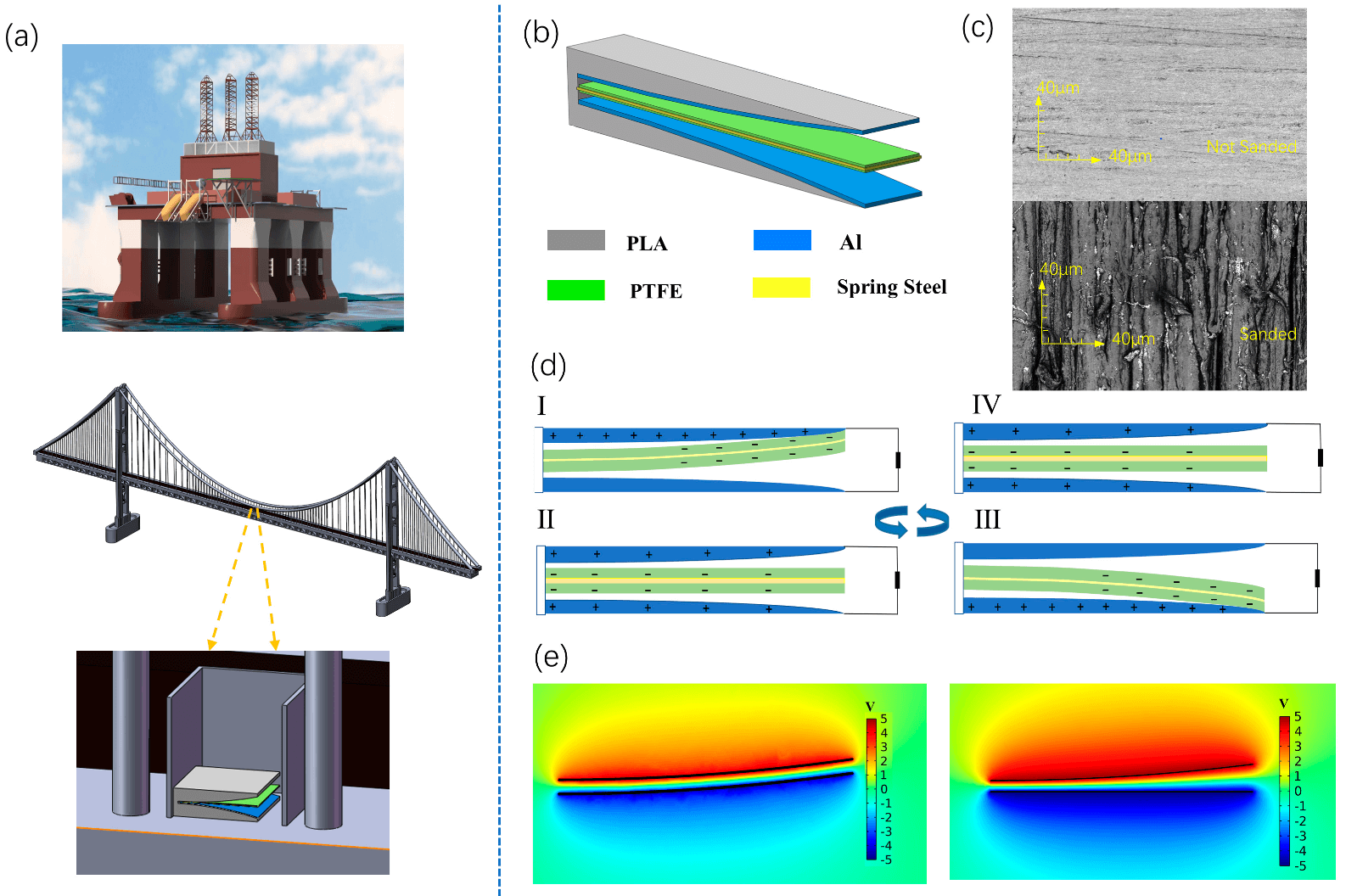Abstract
Vibration sensing is of great significance in offshore engineering monitoring and safety detection. This paper presented a low-frequency vibration sensor (LV-TENG) based on a cantilever-beam-structured triboelectric nanogenerator, which can perform high-precision vibration sensing while conducting vibration energy collection effectively. The LV-TENG was composed of two aluminum electrode layers, a spring steel sheet covered with polytetrafluoroethylene (PTFE) and a first-order vibration mode structured frame. Under the excitation of external vibration, the spring steel sheet undergoes first-order modal vibrations between the aluminum electrodes and generates a periodically fluctuating electrical signal in the external circuit. The vibration profile of the cantilever beam was first analyzed theoretically to provide guidance for structural design. On this basis, the influence of the main structural parameters, including the structure of the Al electrode, the thickness of the steel plate, and the electronegative materials, on the output performance of LV-TENG was experimentally investigated and the structure was optimized to enhance electrical output. The results showed that the LV-TENG can accurately sense structure vibration with a frequency of 0.1 Hz to 5.0 Hz and an amplitude of 2.0 mm to 10.0 mm. The measured output voltage followed a positive linear relationship with frequency and the fitted correlation coefficient reached 0.994. The demonstration experiment indicated that the LV-TENG is expected to provide a new avenue for low-frequency vibration monitoring and can be used for structural health monitoring analysis in marine engineering.

